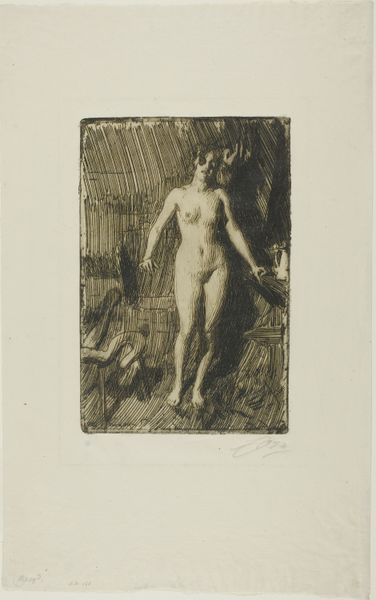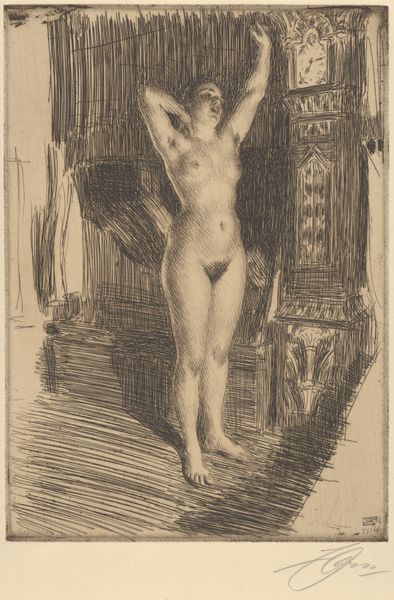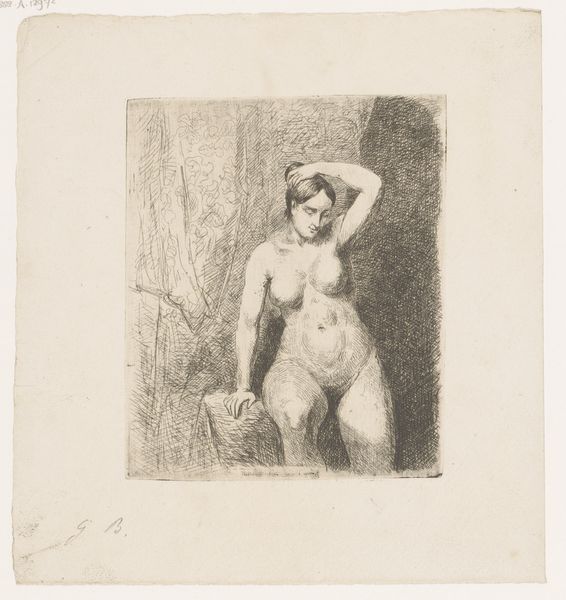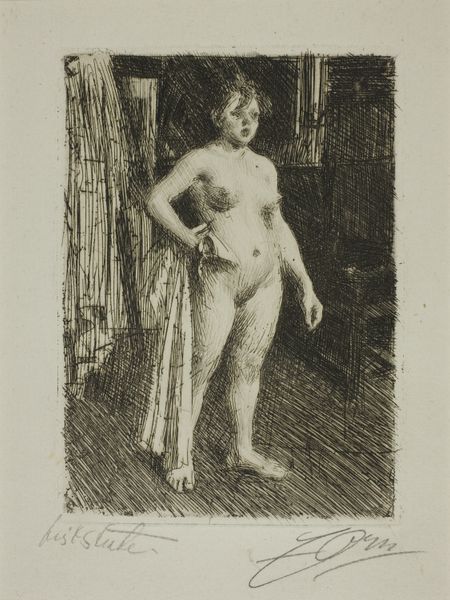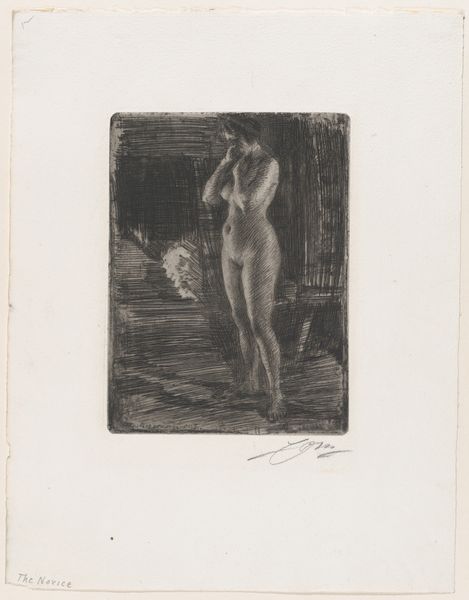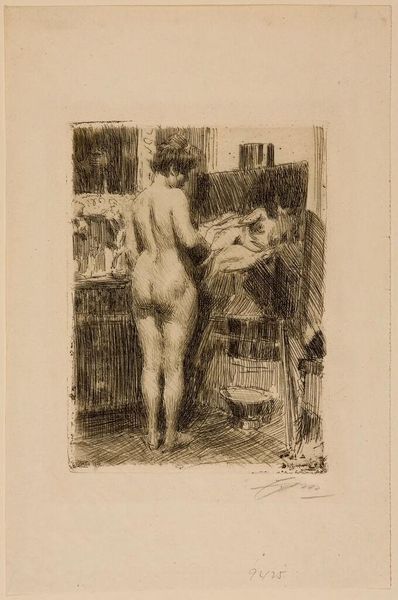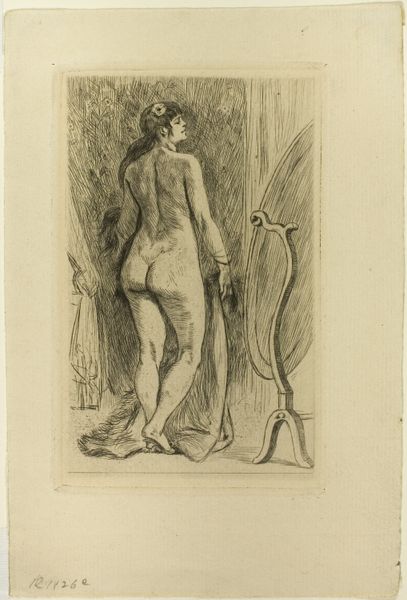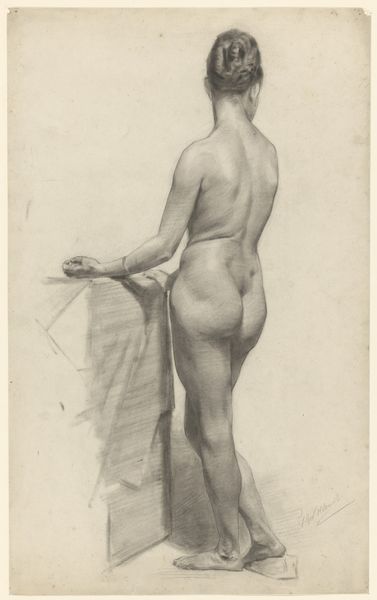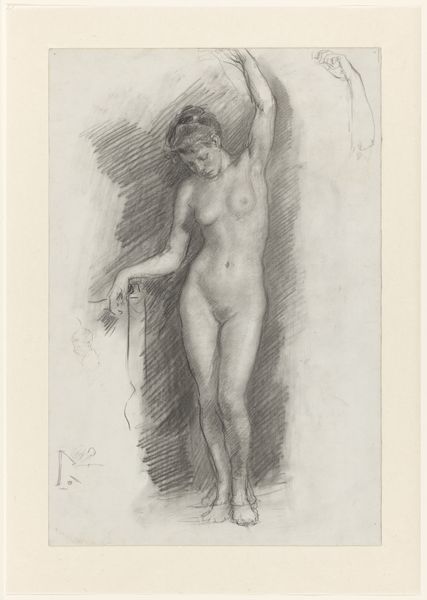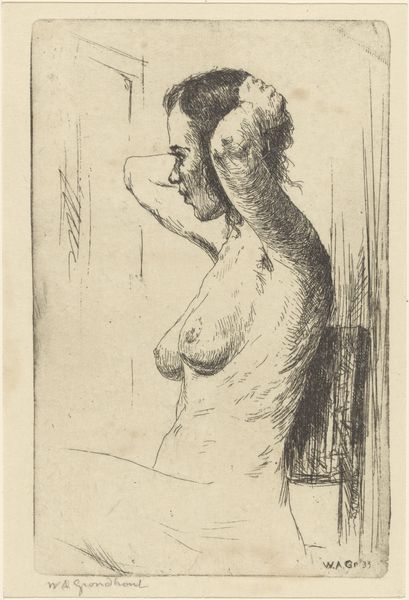
drawing, print, etching, paper
#
portrait
#
drawing
# print
#
etching
#
figuration
#
paper
#
nude
#
realism
Dimensions: 178 × 119 mm (image/plate); 319 × 203 mm (sheet)
Copyright: Public Domain
Curator: Anders Zorn, a Swedish painter and printmaker, created this etching entitled "Before the Stove" in 1903. It’s currently housed here at The Art Institute of Chicago. Editor: My first impression? Intimate. Quietly, beautifully intimate. The lines are delicate, almost hesitant, like a secret whispered on paper. There's a vulnerability in the posture that's really striking. Curator: That intimacy, I think, is partly achieved through the choice of medium – etching. Zorn was a master etcher, and the medium allowed for incredibly fine lines and subtle tonal variations. It also allowed for reproducibility, meaning this intimate moment could be disseminated quite widely, shaping public perception. Editor: You’re right, it's incredibly detailed, and there's something about the slightly unfinished quality that enhances the raw feeling. What's the significance of the stove itself, beyond just providing heat? Curator: The stove is central – and was an important source of both heat and sustenance but also safety. It serves as a domestic symbol of comfort and life itself. It represents a distinctly feminine space in early 20th-century Sweden. Consider, who typically would have labored in the immediate proximity to the hearth? The subject is both empowered, and constrained, by it. Editor: Hmmm, maybe it is meant to challenge assumptions – like how do we view a woman in her private space. I find myself drawn to her downcast gaze, it almost creates a sense of… yearning, perhaps? I find it's relatable even now, over a hundred years later. It evokes this universal feeling, maybe longing for connection and peace. Curator: And, no doubt, reflecting social change through shifting portrayals of women, then, also, challenging our presumptions now, about how women have been regarded in art and what sorts of narratives still hold force. Editor: Absolutely. Zorn gives us this fleeting glimpse, inviting us into a private world. I feel honored to have shared it! Curator: Yes, this print offers a unique vantage into the early twentieth century and still echoes profoundly within broader cultural conversations about the portrayal of women and private moments.
Comments
No comments
Be the first to comment and join the conversation on the ultimate creative platform.
